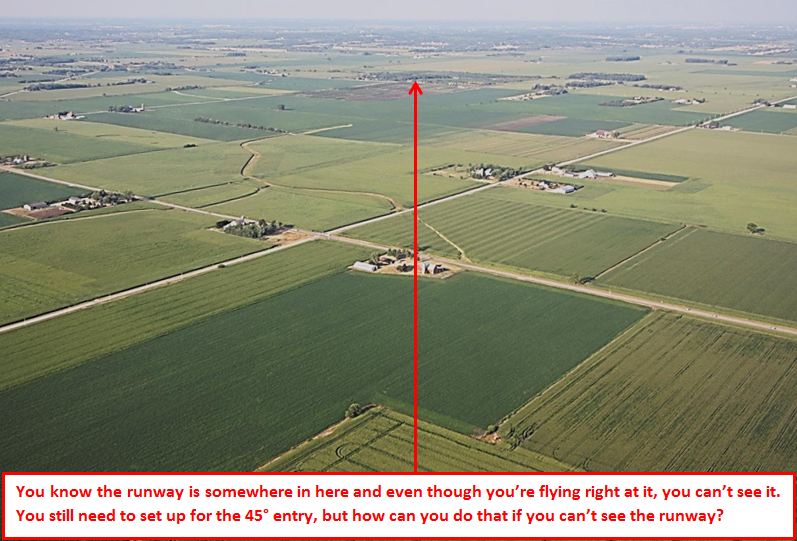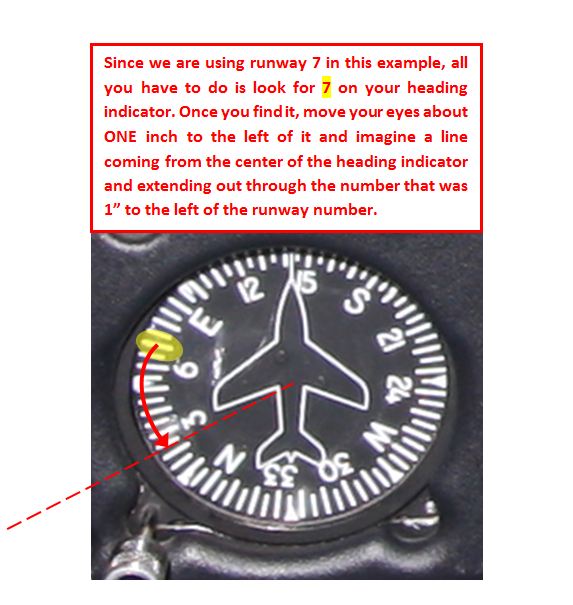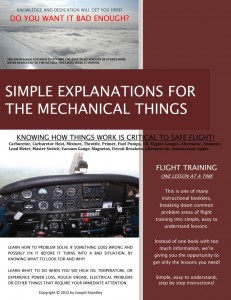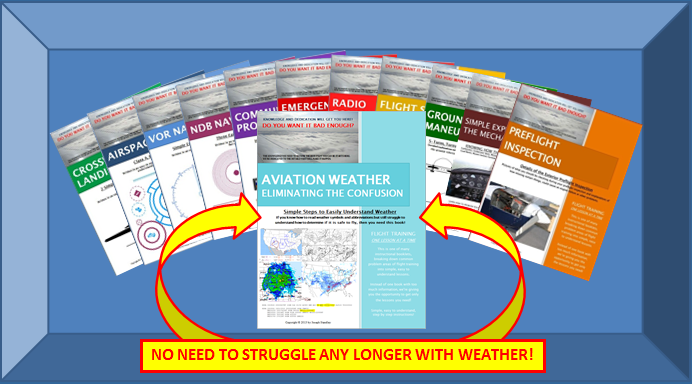by Joseph Standley | Aug 24, 2012 | All Pilots
You’re almost at your destination airport. You’ve never been there and you are unfamiliar with the area. You can see where the airport is in the distance but are unable to see the runway. You have to start thinking about entering the 45 to get into the pattern but how can you figure that out if you can’t see the runway?
I’ve flown with many people that have a hard time figuring out where the 45° entry is. They try to imagine the pattern but stilll struggle with it. Unless they see the runway, they get confused. There is a super easy way to figure this out as you will soon see. Let’s start by looking at the image below.

You’re almost at your destination airport in an unfamiliar area and you need to get set up to land at an airport you’ve never been to. You’ve narrowed the location of the airport down to one area but can’t see it yet. You don’t need to see the runway to set up for a landing, you just need to know where the airport is.
It’s really easy to figure out. To make this easy for you, we will start with the first step. You should be flying directly toward the area where the airport is. Now look at the area where the airport is and imagine a vertical line going right through the center of it, dividing the airport area into a left and right side. Now do the same thing with a horizontal line making a near and far side. See image below.

Once you have imagined the airport split into a left and right side and a near (area before the airport) and a far (area past the airport) side, then we will figure out which one of these quadrants the 45° entry will be in. In order to do that we need to know what runway we will be using.
For this example we will assume we are using runway 7. As you should know by now, 70° is the number that runway 7 is associated with. With that in mind, we will move on to the next step which is to look at the heading indicator and find 70°, which represents the runway we will be using. See below.

So far all you’ve done is image the airport area divided into a near and far side and a left and right side for step one. For the second step all you had to do is find the runway number on your heading indicator and look one inch to the left of it while imagining a line extending out through that point from the center of the heading indicator.
There’s no need to remember any other numbers or do any math. Just remember where that line you imagined is because the next step may make it more clear. In the next step, you are going to repeat the first step by dividing the heading indicator into 4 sections just like you did with the airport area in the first step! See next image.

Are you beginning to see the picture yet? The line you imagined coming out from the center which is one inch to the left of the runway number (dashed red), is where your 45° entry is. The 4 sections are the same as those that you imagined with the airport area and you can see which section you need to be in for your 45° entry to the airport. According to the image above, you would enter from the near left side of the airport. See below for a better visual putting the 2 examples together.

The only thing you have to do now is figure out how far out from the airport you want to enter the 45. If you plan to be about 2 1/2 to 3 miles out on the 45 then you just have to estimate that distance as I did with the X in this example and start heading that way! When you get there, just turn toward the airport area and fly directly to it.
Since you are doing this without seeing the runway, it is possible that you may be off a mile to the left or right but you will still be in the right area when making your radio call on the 45. As you get closer, just keep scanning left and right of your course as well as looking straight ahead and the runway will eventually come into view. Once you see it, you can change your heading slightly to get heading exactly where you need to be.
A couple of things to remember: Your entry is where the dashed line is. When moving one inch to the left of the number, you move left as you read the number, so when the number is upside down, you have to imagine which way left would be if your head was upside down reading it.
If you are flying into an airport that has a right hand traffic pattern, the only thing that you have to do different is to find the runway number and move one inch to the right instead. Give this a try and let me know how it works out for you!
Please leave a comment below and sign up for our newsletter for many more flying tips sent right to your email.
by Joseph Standley | Aug 8, 2012 | Pilots, Student Pilots
Do you know what you don’t know?
Over time, I’ve come to realize that many people don’t know much about how any of the mechanical things work in the airplane. They go through the motions of doing a runup and not really knowing if something is right or recognizing if something is wrong. One example I can give is when I was with a student. He was doing a magneto check, and checked the right mag. It immediately started running rough. He checked the rpm drop and switched back to the both position. He then switched to the left mag which was smooth. He went back to both and then went on to the next item in the checklist.
I stopped him at this point and asked if he noticed the difference between the two mags. He said that he did. I asked him why he ignored it and continued on with his checklist if he noticed it and he said it was because the rpm drop was within the limits specified in the checklist. We had a discussion afterwards. As a pilot, you need to be able to problem solve things and if you don’t know how things work and what they are supposed to do, then how are you going to save the day if something ever goes wrong while you are flying? I can tell you right now, that if I was on an airline flying with a pilot that had no clue how things worked, I would be pretty nervous.
Would you be ready and know what to do if the engine started running rough?
What about if the engine quit while you were flying. I’m sure you’d go through the motions of trying to restart by flipping switches and turning on buttons because that’s what you were taught to do, but do you know WHY you are doing it? Do you know how to narrow down the problem? Would you recognize the signs of the problem or know how to minimize your risk?
Can you answer these questions?
Do you know what an alternator is? How about a load meter, fuel pump, circuit breakers, carburetor or carburetor heat, magnetos, primer or vacuum pump? What about the throttle or mixture control, alternate air, annunciator lights, oil or master switch? Most people I talk to only know only a couple of these things. Knowing these things can be critical to your safety and the safety of your passengers. You need to study every detail about all of these items and know them well enough to be able to problem solve if something happens.
We have a new offer made available today to help you!
As of today, we have just released a new E-Lesson explaining in simple terms, you can relate to, so that you can easily understand and remember what all these things are. There are also tips on how to problem solve, explaining what you should be looking for and why. It doesn’t get any easier than this. If you’ve avoided this stuff because it’s boring and hard to understand, then this is for you. If you like the free tips we post on our site, then you’ll love the detail of this even more. The explanations are designed to make it as easy as possible for you! If you want to learn it all in as short a time as possible, buy it now! You’ll be glad you did.
$9.95

The mechanical things and how they work

by Joseph Standley | Aug 2, 2012 | All Pilots
ARE YOU THINKING ABOUT BUYING A PLANE BUT AREN’T SURE WHETHER IT’S WORTH IT?
I’ve had many students that have completed their private pilot training and immediately bought their own plane afterwards. Some actually buy planes before they even get their license! So which is better? This really depends on you and your defintion of better.
From a cost standpoint, it is usually cheaper to rent. I say usually because most people only fly 50 hours a year. If you’re someone that plans on flying a couple of hundred hours a year or more then renting may not be for you. From a convenience standpoint, it is better to own. They both have advantages and disadvantages. Let’s look at some of them. We will start with renting. (more…)
by Joseph Standley | Aug 2, 2012 | All Pilots
When compared to flying an airline, flying small plane has some nice advantages! If you’re only traveling a couple of states away, then a small plane would probably be better. A small plane doesn’t seem like much of an advantage at first glance, but let’s look a little closer. (more…)
by Joseph Standley | Jul 6, 2012 | Student Pilots

These E-Lessons are written in an easy to understand format, avoiding all the technical language that just confuses people. Simple, step by step instructions walk you through every step to be sure that you understand, once and for all. For the price of about 10 minutes with an instructor, you can get just the lesson you need. Why buy a whole book when you’re only struggling with one or two areas?
We have many more to come! Feel free to send us an email with areas you’d like to see covered. Click image for more details about what each lesson covers. Fly safe and never stop learning!








